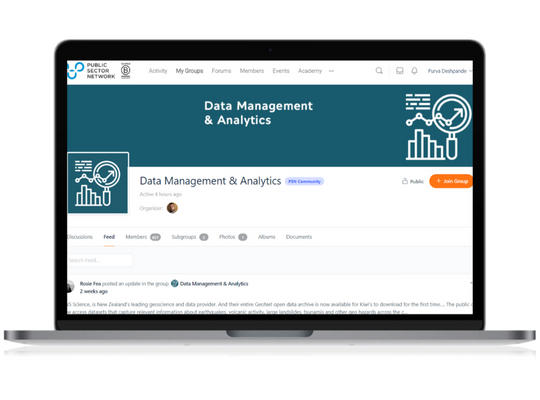Training Overview
Adopting a Proactive Approach that Enables Modernisation and User-Centric Initiatives
80% of organisations seeking to scale digital business will fail because they do not take a modern approach to data governance.
Data governance is one of the common causes of frustration, friction, delays (and failure) of business transformation. It is s critical that your data governance and information management policies and practices are up-to-date and aligned to on-going modernisation.
This course will take a simple approach to the complex and ever-present problem of data governance. It will equip you with the skills to get on the front-foot by modernising your principles embedding practices and changing behaviours. Developed and delivered by pioneers of data governance and information management in the region, it focuses on intuitive practices that are easy to adopt and embed for lasting change.

Who Should Attend
This course is designed for heads, directors, managers, leads, and analysts, in charge of transforming all three levels of government including:
Data Governance
Information Management
Data Management
Learning Outcomes
Understanding the data management and data governance principles
Assess the data governance maturity of your organisation and strategies to close the gaps
Learning the importance of the roles and responsibilities from data users to data stewards and data custodians
Gain insights that will enable you to optimise data governance for business transformation
Meet Your Facilitators

Nigel Schmalkuche
Managing Director Principal Consultant
Strategic Architects
Nigel Schmalkuche is a business and ICT professional with 25 years’ experience in guiding government and private organisations through digital business transformation particularly in the fields of housing and public works, police and emergency services, elections, health, utilities and financial institutions.
Nigel has a keen talent for connecting the dots between technology, capability and strategy. And he has applied this to develop and embed enterprise architecture practices; shaped strategic roadmaps, upskilled key stakeholders; designed solutions to navigate complex challenges to drive transformational change.
He is a TOGAF 9.2 Certified Enterprise Architect with 17 years’ experience in implementing enterprise architecture to achieve business outcomes.
Key Sessions
Understanding Data Governance
- Understanding data governance: What it is and why it matters
- What is data management
- Data management essentials
- What is data governance
- The business value of data governance
- How does data governance fit into the data management framework
- The business drivers of data governance
- Mapping the data lifecycle
- Understanding the need to data governance
Data Governance Components
- Key components of data governance
- Establishing a data governance framework
- What is the best practice of meta data management
- Improving data access, security and quality
- The elements of a data governance program
- Practical exercise: Data maturity model and roadmap
- Apply the principles and concepts learned today to assess data governance maturity on your own organisation
- Evaluating where you want to be in the short, medium and long term
- Strat identifying the gaps and what you need to do to bridge them
Data Ownership and Products
- Who should own data governance: Roles and organisational structures
- Data governance roles and responsibilities
- Key responsibilities and typical data governance structures
- Establishing a data governance community of practice
- Exploring data governance tools: Microsoft purview
- Data governance for open data and data sharing
- Improving data accessibility
- Establishing policies and guidelines
- Practical tips for management
Implementing Data Governance
- Setting up a data governance program
- Exploring and understanding hierarchies
- A checklist: Chief Data Officer’s first 90 days – data governance priorities
- Strategic leadership and creative thinking
- Creating and implementing a data governance roadmap
- Developing a vision
- Establish a framework
- Gaining stakeholder buy-in
- Establish governance committee
- Refine, progress and continuous improvement
Registration
Final Price
$1195
per person + GST
Interested In Learning More?

